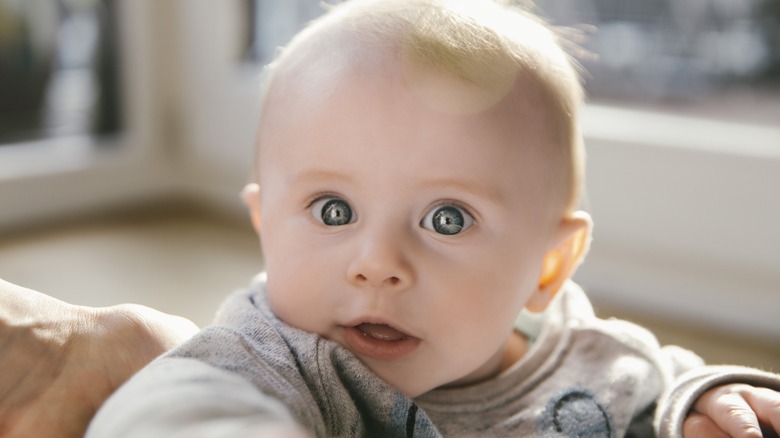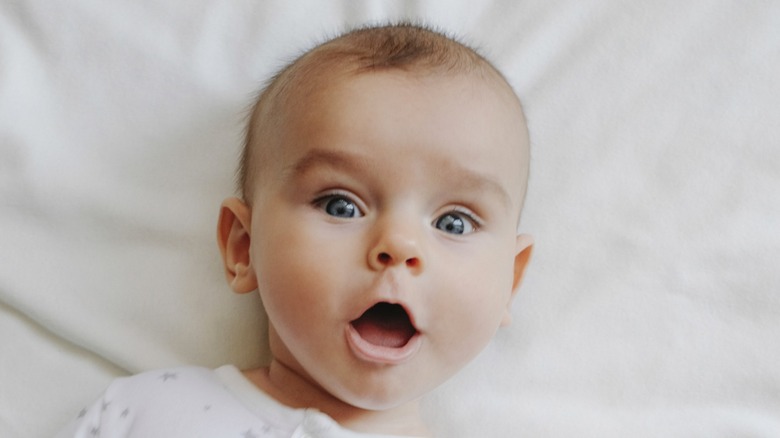Why Do Babies Stare At You? It Could Be Tied To Your Appearance
Have you ever been standing in a store and felt like someone is watching you, only to see that the someone is a baby? It might seem like the baby can't stop staring even if you turn away. This behavior is a normal part of the baby's cognitive and learning development as they master the uses of their eyes. What's even more interesting, though, is that it probably means the baby finds you attractive.
According to a study from 2000 that was published in Infancy, infants spend longer looking at faces that are considered attractive than faces that are not. The researchers showed one of two sets of 12 attractive–unattractive pairs of photos of female faces to 29 infants no older than 5 days old. One set of pairs had matching internal facial features (e.g., eyes, nose, mouth) but different external features, the other set had matching external features (e.g., hair, ears, jawline) but different internal features. Although there was no difference in staring behavior between attractive versus unattractive external features, the babies stared at photos with attractive internal features significantly longer than they did unattractive internal features.
In addition to attractiveness, babies stare at faces with what they perceive as unusual features because they're curious about them. These features can be thick beards or eyebrows that stand out, earrings or eyeglasses, or even hair that's dyed in bright colors.
What is a baby's vision like?
Did you know that it takes time for babies' vision to develop? At first, they can't see beyond 8 inches because they can't focus or control their eye movements well yet. For the first few weeks, the only things they can see are contrasting colors and shapes, and even then, they can only make out blurry outlines rather than fine details. The best contrasting colors are, of course, black and white, but babies can see reds as well.
Although infants can see the spectrum of colors like adults by the time they're 4 months old, the colors appear dull, which is why bright colors appeal to kids and infants more than soft shades and tones. Their hand–eye coordination and movement tracking starts developing around the same time, too, and it continues to improve between 5 and 8 months of age. Around 5 months old, babies' eyes are starting to work together better, and their depth perception subsequently improves. Their vision keeps developing quickly over the coming months, and by 36 months (3 years) old, most of them have 20/20 vision. However, there are still some visual skills that don't develop until kids are 10 years old.
Even though staring is normal for babies, consider taking precautions to protect their eyesight development: Prevent them from watching colorful shows on up-close screens such as smartphones and tablets. That's because myopia is an eye condition kids can get from staring at screens for extended periods while their eyes are still developing.

